By BRIAN SALTER
By BRIAN SALTER
AROUND a decade ago, a book entitled 101 Places Not To Visit Before You Die was published in the U.S. In her entry about Beijing the author writes a caustic review of the Beijing Museum of Tap Water: “In 2001 it was decided that 150 new museums should be opened in Beijing in time for the 2008 Olympics... Hence the capital now has a museum devoted to the fascinating history of ... tap water.”
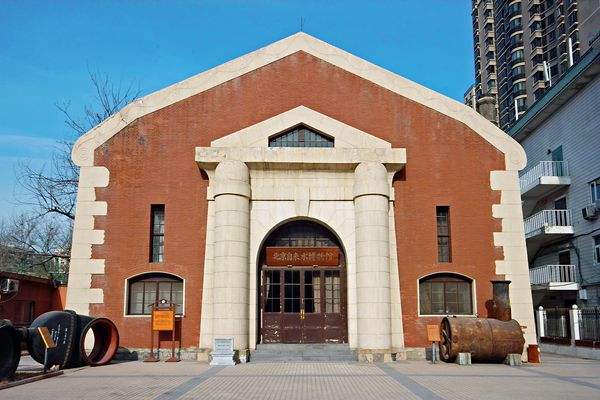
The Steam Engine Room – epicenter of the museum.
I felt compelled to go. But on seeing the museum for myself I wondered if the author had actually been there, or just written her review based on comments she had trawled from the Internet.
The history of Beijing's piped water supply began in 1908, with the founding of the Jingshi Tap Water Company. A year earlier a fire had broken out in the palace bedroom of Empress Dowager Cixi (1835-1908). As there was no water on hand to extinguish the blaze, it got out of control and destroyed many of the empress's valuables.
The empress dowager, the country's de facto ruler, accordingly ordered the construction of a water plant that would facilitate the dousing of accidental fires that so frequently broke out in Beijing. A group of businessmen thereupon decided to set up a water purification and pumping station using a steam engine to circulate water around the perimeter of the imperial city walls.
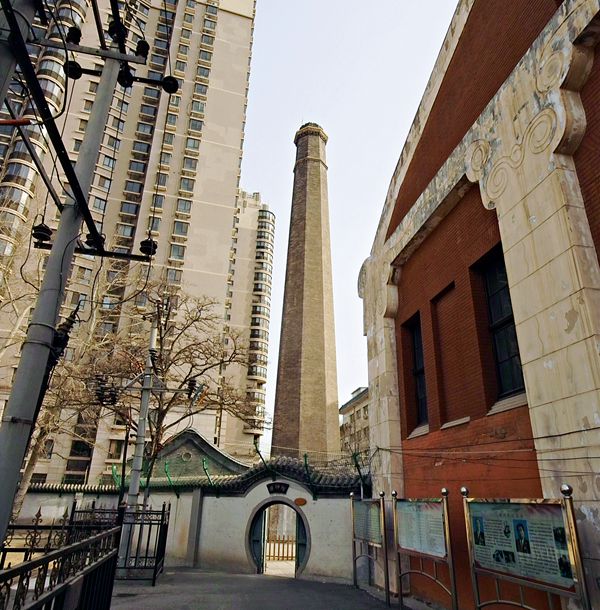
The Steam Engine Room chimney amid surrounding residential high-rises.
Unfortunately, the best laid plans of mice and men come easily to naught when events like a revolution get in the way. The enterprise lasted just three years until the end of the Qing Dynasty (1644-1911) and of China’s imperial system as a whole. However, the water plant came into its own during the Japanese occupation of China during World War II.
The museum is across the street from the Russian Embassy, at the center of the Qingshui Yuan apartment complex. Originally the room that housed the steam engine, the building’s principal arch and round stone columns reflect Western architectural influence. Built from red bricks fired in German kilns, the museum stands as testament to the country’s early efforts to modernize and collaborate with the West.
The steam engine room, which has a ceiling height of 12 meters, went into operation in 1910. It was equipped with two sets of horizontal double-acting plunger steam engines that generated 441 KW to drive two pumps which distributed 18,700 cubic meters of water daily. Disinfected water was pumped into a water tower and distributed through gravity into the water supply network.
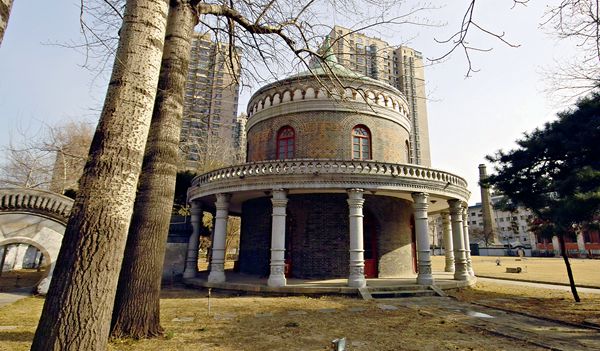
The intake pavilion.
The museum exhibits include 130 historical artifacts, as well as 110 pictures, 40 models, and a miniature tap water filtration system. The museum-proper consists of a series of rooms through which to wander at will. On one wall hangs the photo of an early president of the company, and to its left a group photo from 1948 of the company’s employees.
Also on display is correspondence bearing official seals relating to the inauguration of the company, along with items marking key moments in the history of the capital’s piped water system, and architectural models tracing its development.
Introduction of Tap Water in an Old City
Replicas of historically significant items were made especially for the grand opening of the museum in 2003. They include an ornate wrought iron water tower built by German craftsmen, the original having been demolished in the 1950s during the drive to process iron into steel and fuel the growth of New China.
Exhibits also include an installation consisting of buckets of water next to a public water tap positioned at the end of a hutong. By 1910, outdoor taps supplying clean chlorinated water had been installed throughout Beijing. Upon buying tickets, residents could draw water directly from them, or have wooden buckets of water delivered to their homes by cart.
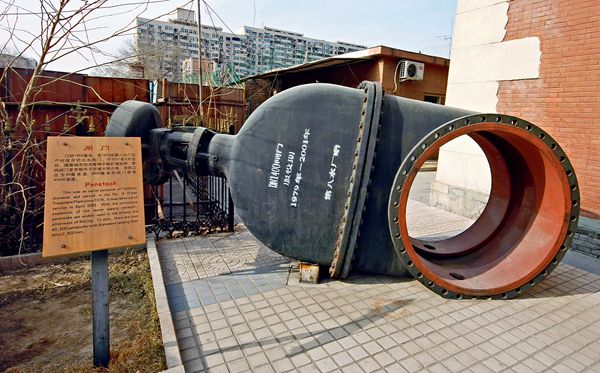
A 140 cm penstock, one of many artifacts in the museum grounds.
It is said that when chlorinated water was first introduced, many Chinese were against the idea. The water plant had after all been developed with European technology. It hence had undesirable associations with the foreigners who had burned and pillaged the capital just a few years earlier. To promote their product, the company’s owners published ads for their “healthy” water, giving assurances of its safety compared to the well water hitherto used. Some of those advertisements, along with the water tickets printed on rice paper bearing vermilion stamps, are also on display.
In the gardens outside, the octagonal steam engine room chimney still stands. Twenty meters tall, it was built in the 1920s using the traditional Chinese construction method of grouting the bricks with sticky rice! Despite the many jokes this might bring to mind, the fact remains that it appears as solid today as the day it was built.
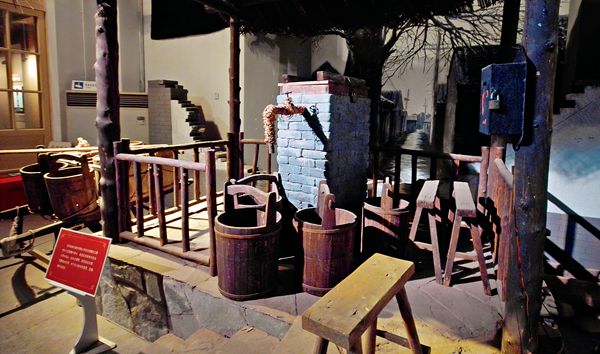
The installation showing buckets around a hutong public tap.
In 1931 the Beijing water works started to operate on electric power.The boiler room and chimney thus became obsolete.
A little further on in the gardens are the remains of a collection pool for water that had been disinfected. Overlooking it is the original intake pavilion, built in 1908, which is still in good repair. One of its main features is a circular pillared temple dedicated to the Buddhist goddess. It also houses a carved tortoise and snake that sit either side of the Bodhisattva, though you have to peer through padlocked doors to catch a glimpse of them.
In summary I would say that the Beijing Tap Water Museum is one of capital's more unusual tourist attractions. But owing to its location, you are unlikely to come across it by chance.
BRIAN SALTER is a broadcaster and journalist who has been working in China for the past five years.